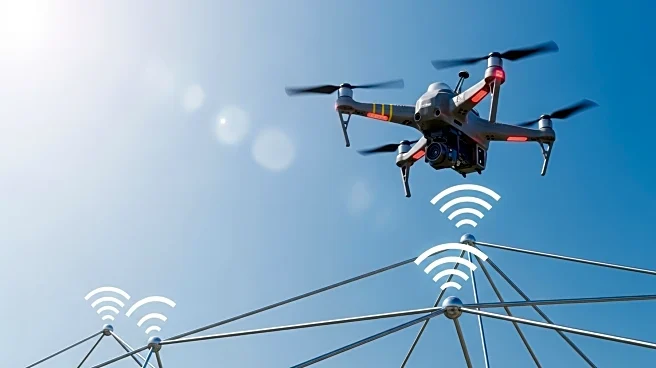What's Happening?
Researchers at the King Abdullah University of Science and Technology (KAUST) are pioneering the development of 6G wireless networks that utilize aerial platforms such as drones, airships, and satellites as base stations. This innovative approach is expected to be implemented in the early 2030s, marking a significant advancement in telecommunications technology. The initiative aims to enhance network coverage and connectivity by deploying intelligent aerospace platforms in the atmosphere, stratosphere, and orbit, thereby overcoming traditional ground-based limitations.
Why It's Important?
The development of 6G networks using aerial base stations represents a transformative shift in wireless communication technology. By leveraging drones, airships, and satellites, these networks can provide broader coverage and improved connectivity, particularly in remote or underserved areas. This advancement is crucial for supporting the growing demand for high-speed internet and data services, facilitating the expansion of smart cities, and enabling new applications in fields such as autonomous vehicles and Internet of Things (IoT) devices. The initiative underscores the importance of innovation in maintaining competitive advantages in global telecommunications.
What's Next?
As the research progresses, stakeholders in the telecommunications industry, including service providers and technology developers, are likely to explore partnerships and investments to accelerate the deployment of 6G networks. Regulatory bodies may need to address challenges related to airspace management and spectrum allocation to accommodate the new infrastructure. Additionally, further research and development will focus on optimizing the technology for commercial use, ensuring reliability, security, and efficiency in real-world applications.











